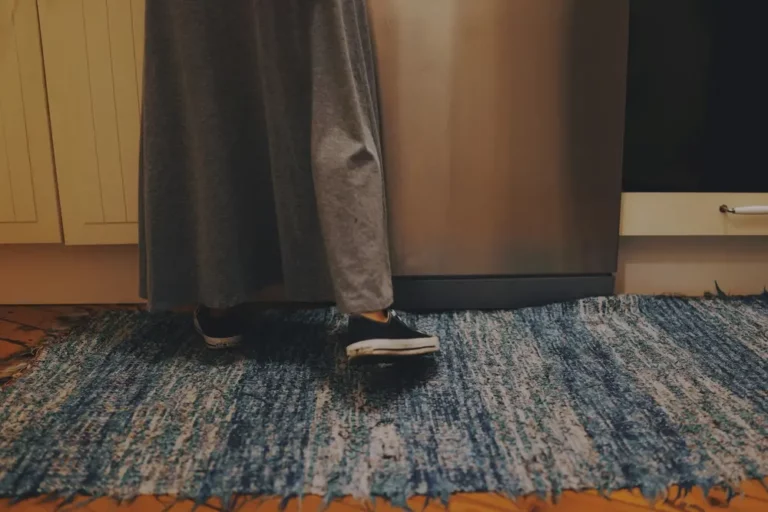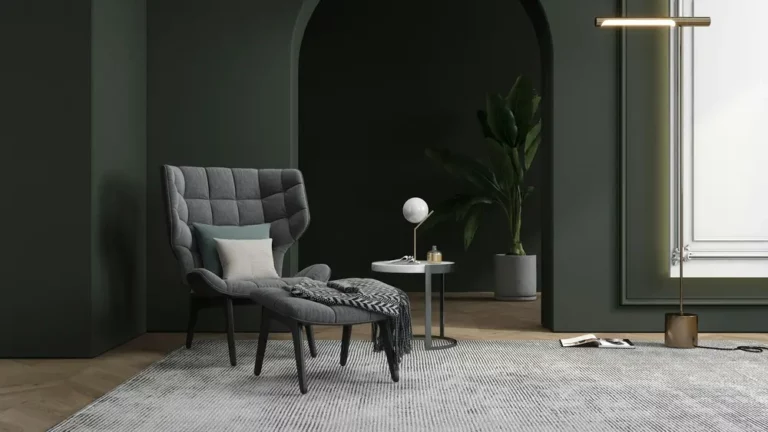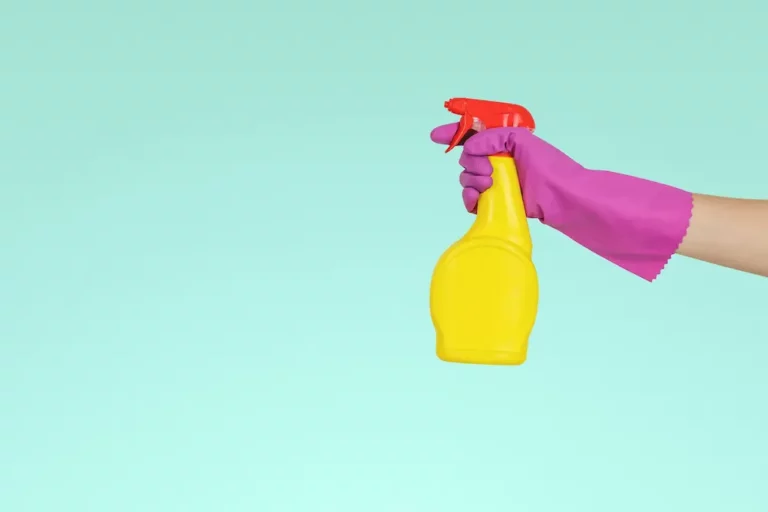DIY Bathtub Stopper: Fixes, Maintenance, and Upgrade Tips
There’s nothing quite like sinking into a warm bath after a long day, right? But imagine my surprise when I went to plug the tub, only to find my trusty bath plug had called it quits. Frustrating, I know. But before you let that ruin your relaxation plans, I’ve got some DIY tricks up my sleeve that’ll save the day.
You’d be surprised at the household items you can transform into a makeshift bath stopper. From coffee pods to washcloths, I’ve experimented with a few to see which ones keep those precious bubbles in the tub. Stick around, and I’ll share how you can keep the water right where you want it, without a trip to the store.
Introduction to DIY Bathtub Stoppers
We’ve all been there. You’re looking forward to a long, relaxing soak in the tub, only to find that the water is slowly draining away because the stopper isn’t doing its job. It’s a scenario that can turn a moment of relaxation into a frustrating plumbing puzzle. Bathtub stoppers are essential for creating a watertight seal that allows the tub to hold water. Whether it’s for a luxurious soak or practical tasks like cleaning, a functioning stopper is a must-have for any bathtub. But when the stopper breaks, wears out, or just disappears (because honestly, where do those things go?), you’re left with a dilemma. Rather than rushing out to buy a new one or calling a plumber to fix it, there are DIY solutions that can save the day.
Benefits of DIY Solutions
Opting for a DIY bathtub stopper solution comes with a host of benefits. For starters, it’s cost-effective. Avoiding a purchase at the store or skipping the plumber’s bill can keep a bit more money in your pocket. Then there’s the immediate satisfaction of solving the problem yourself. There’s no waiting for a plumber to show up or going out to buy a new stopper. With materials you likely have lying around your home, you can create a makeshift stopper in minutes.
Moreover, DIY solutions are often customizable and reusable. You can tailor the size and material of your temporary stopper to fit your specific bathtub drain, ensuring a snug, leak-proof fit. And when you’re done with your bath, you can simply clean and store your DIY stopper for next time. This approach not only solves your immediate problem but also contributes to a more sustainable household by reducing waste and the need for new plastic products.
Understanding Different Types of Bathtub Stoppers
When I dove into the world of DIY bathtub stoppers, I quickly realized the importance of understanding the various types that exist. Knowing these will not only make it easier to find a makeshift solution but also to appreciate the mechanics behind the original fixtures you’re trying to emulate or replace. So, let’s break down the common types and see how each works.
Common Types of Bathtub Stoppers
Pop-up Stoppers
Pop-up stoppers are particularly nifty. With a simple push or pull on the lever, these stoppers either pop up to drain the water or create a seal to fill the tub. They’re integrated into the tub’s design and offer a sleek look without any protruding parts when in the open position.
Flip-flop Stoppers
Flip-flop stoppers are fascinatingly simple. They typically feature a flat or slightly concave disk on a pivot. When you want to fill the tub, you flip the stopper so the disk covers the drain. To drain the tub, you flip it the other way. The hands-free operation makes flip-flop stoppers very convenient.
Chain-and-hook Stoppers
Chain-and-hook stoppers remind me of something straight out of an old movie. These are essentially caps attached to the end of a chain. You place the cap over the drain and secure it using a hook that attaches to an adjacent wall or the tap spout. They’re simple but effective, although not the most elegant solution.
Rubber Stoppers
Rubber stoppers are the epitome of simplicity. They’re round, flat disks made of rubber that you manually place over the drain to stop the water. Their effectiveness depends on the size of the stopper in relation to the drain hole and how well it seals when pressed down. Rubber stoppers are universal and can be used in almost any drain with the right fit.
How Do Bath Plugs Work?
Understanding how bath plugs work enlightens the DIY process, helping you create effective solutions. Essentially, all bathtub stoppers aim to achieve the same goal: creating a water-tight seal over the drain. Whether it’s through a mechanical device like a lever-operated pop-up stopper or the simple application of a rubber stopper, the principle remains the same. The stopper must block the water from entering the drain, allowing the tub to fill. The method of operation—be it a lever, a flip, a chain, or just the placement of a rubber disk—determines the type of stopper and its functionality in maintaining the seal. Each type has its unique advantages and challenges, especially when considering a DIY replacement or fix.
Materials and Tools Required
Essential DIY Materials
When diving into the world of DIY bathtub stoppers, there’re a few crucial materials you need to gather before getting started. Let me walk you through each one, so you’re prepared for your project.
Rubber Sheet
A rubber sheet is the star of the show. It acts as the main barrier, providing a water-tight seal over your bathtub drain. Ensure it’s flexible enough to conform to the drain’s shape but durable to withstand the pressure of the water.
Scissors
You’ll need a pair of scissors to cut the rubber sheet into the precise shape and size of your bathtub drain. Make sure they’re sharp; a clean cut is essential for a perfect fit and seal.
String
String might seem like an odd addition, but it’s pretty handy. It’s used to tether the rubber stopper to a nearby fixture, ensuring you don’t lose it down the drain or misplace it when it’s not in use.
Tape
Last but not least, we’ve got tape, specifically waterproof or plumbers’ tape. It’s an excellent tool for securing and enhancing the seal around the edges of your rubber stopper, especially if you find you need just a tad more water-tightness.
Additional Tools and Supplies
While the essentials are crucial for creating a basic stopper, there are a few additional tools and supplies that can help refine the process or provide alternative solutions. For instance, plumber’s putty can be a lifesaver if you find small gaps that allow water leakage. Similarly, a multimeter could come in handy if you’re mixing electronic detection techniques with physical barriers for a high-tech solution. Remember, the scope of your project can vary greatly based on how customized and elaborate you want your DIY solution to be, so it never hurts to have a well-stocked toolbox.
Step-by-Step Guide to Making a Bathtub Stopper
When you’re tackling a problem like a non-functional bathtub stopper, going the do-it-yourself route not only saves money but also imbues a sense of accomplishment once you’ve solved the issue with your own two hands. Let me walk you through a couple of methods for creating a bathtub stopper from the comfort of your home.
Silicone Caulk Method
Preparing the Work Area
First up, my workspace needs to be prepped to ensure a mess-free and safe environment. I’ll make sure to clean the area around the bathtub drain thoroughly to remove any debris or water that could hinder the adhesion of materials. Covering the surrounding area with old newspapers or cloth will help in easy cleanup later on.
Cutting and Applying Plastic Wrap
Next, I’ll cut a piece of plastic wrap, ensuring it’s large enough to cover the drain with some excess around the edges. The plastic wrap acts as a barrier that prevents the silicone caulk from sticking to the bathtub itself, making it easier to mold and shape the stopper.
Shaping and Curing the Stopper
Once the prep is done, it’s time to get my hands dirty. I’ll apply a generous amount of silicone caulk onto the plastic wrap over the drain. With gloved fingers, I’ll shape the caulk into a plug or stopper, making sure it’s thick enough to seal the drain when needed. It’s crucial to allow enough curing time, typically 24 hours, for the silicone to harden properly.
Testing and Adjusting Your DIY Bathtub Stopper
After crafting your DIY bathtub stopper, it’s vital to test its performance under real conditions. I’ve found this stage both exciting and crucial for ensuring a practical solution to the pesky problem of disappearing bath water.
Ensuring a Secure Fit
First thing’s first, getting the fit right is paramount. I carefully placed my homemade stopper over the drain, pressing down gently to ensure it fully covered the opening. The key here is to ensure there’s no visible gap between the stopper and the rim of the drain. Any gap, no matter how small, could defeat the purpose of your stopper.
For silicone caulk stoppers, ensuring a smooth, moldable edge that conforms to your bathtub’s drain shape is crucial. If you’ve opted for a temporary solution, like a plastic cup or jar lid, try wrapping it in a layer of plumber’s putty or waterproof tape to enhance the seal.
Observing for Leakage and Making Adjustments
With the stopper in place, I filled the bathtub with a small amount of water and waited. Watching for any signs of water leakage is a telltale way to assess the effectiveness of your DIY solution. If you notice water levels dropping, it’s time to make some adjustments.
Sometimes, simply repositioning the stopper or applying additional pressure can improve the seal. However, if leakage persists, consider adding more layers of your sealing material, whether it’s silicone, putty, or tape. For those using a makeshift solution, checking for wear and tear or switching to a more substantial item might also do the trick.
It’s all about trial and error here. I found that tweaking the shape, thickness, or material of my stopper gradually led to a watertight seal. Patience is your ally in this process, as finding the perfect fit can take a few tries. Remember, the goal is a bathtub that stays full for those much-needed relaxations at the end of the day.
Alternative Quick Fixes for Bathtub Drains
Innovative and Simple Solutions
Sometimes, the solution to a clogged or inefficient bathtub drain doesn’t have to be complex. In fact, I’ve found that some of the most straightforward fixes can be the most effective. Here, I’ll share a couple of my go-to tricks that just might save you a headache and a plumber’s bill.
The Plastic Bag Trick
You might be as surprised as I was when I first tried this method. It’s so simple, yet surprisingly effective. All you need is a sturdy plastic bag—think along the lines of those thick freezer bags, not the flimsy ones. Fill the bag halfway with water to give it some weight and then secure it over the drain. The idea is that the weight of the water in the bag will create enough pressure to seal the drain. This solution is not only quick but also remarkably efficient for a temporary fix. Whenever I’ve used this method, it’s been a lifesaver, especially when I’ve needed a functional bathtub in a pinch.
Marine Drain Twist Plug
This alternative caught my eye in a marine supply store, and it’s become one of my favorite hacks for bathtub drains. Marine drain twist plugs are designed to plug holes in boats, which means they’re made to withstand a lot of pressure. They come in various sizes, so finding one that fits your bathtub drain shouldn’t be too difficult. What I love about this solution is its simplicity and durability. You just need to insert the plug and twist to expand it, creating a water-tight seal. It’s a fantastic temporary or even semi-permanent fix that’s easy to implement and doesn’t require any plumbing know-how.
Maintenance and Replacement Tips
Keeping your DIY bathtub stopper in tip-top shape isn’t just about avoiding water pooling at your feet during a shower. It’s about ensuring a pleasant, hassle-free bathing experience every time you decide to take a dip. Here’s how to keep your stopper working like a charm and knowing when it’s time to upgrade to something a bit more permanent.
Cleaning and Upkeep of DIY Stoppers
First off, cleaning your stopper regularly is crucial. For stoppers like the plastic bag trick or the marine drain twist plug, rinse them off with warm water to remove any soap scum or hair that might have gotten entangled. If you’ve used something like plumber’s putty as part of your temporary fix, inspect it each time you clean to ensure it’s still sealing properly. If it’s starting to dry out or crack, it’s time for a fresh application.
Next, don’t ignore the drain itself. Even the best stopper can’t prevent buildup in the pipes. Every month or so, pour a mixture of baking soda and vinegar down the drain, let it sit for an hour, then flush it with hot water. This simple, eco-friendly method can keep your drain flowing freely and reduce the pressure on whichever stopper you’re using.
When to Consider a Permanent Solution
Alright, I’ve got to be honest. While DIY stoppers can be a lifesaver in a bind, they’re not a forever fix. If you find yourself having to reapply plumber’s putty every other week or your makeshift stopper just isn’t holding up to daily use, it might be time to consider a more permanent solution. Here’s a couple of red flags:
- Frequent clogs that your stopper seems to be making worse, not better.
- Water damage signs around your tub. If your stopper isn’t sealing properly, water can seep where it shouldn’t, causing costly damage over time.
- You’re tired of the makeshift look. Let’s face it, while functional, DIY solutions aren’t always the most aesthetically pleasing. If you’re craving a cleaner look, upgrading is the way to go.
Making the switch to a permanent stopper isn’t just about aesthetics or convenience; it’s about safeguarding your home against potential water damage and ensuring your plumbing system remains in good working order. With a variety of options available, from push-and-seal stoppers to those that require a bit more installation effort, finding a permanent solution that fits your bathtub and budget is easier than ever.
Embracing DIY Bathroom Solutions
Crafting the perfect DIY bathtub stopper might seem daunting at first but trust me it’s an adventure worth embarking on. From the simple yet effective Plastic Bag Trick to the more robust Marine Drain Twist Plug these temporary fixes not only save the day but also teach us a thing or two about the importance of regular maintenance. And let’s not forget the leap to a permanent solution. It’s more than just an upgrade—it’s a commitment to your home’s health and aesthetics. So whether you’re dodging water damage or simply aiming for a bathroom that reflects your style and needs dive into the world of DIY. You’ll be surprised at what you can achieve with a little creativity and elbow grease.
FAQ – Frequently Asked Questions
What can I use if I don’t have a tub stopper?
A quick and effective solution is to use a plastic bag filled with water. Seal the bag after filling it and place it over the drain hole. This makeshift stopper will prevent water from draining out, allowing you to enjoy your bath.
How does a bathtub trip lever work?
A bathtub trip lever operates a plunger or a spring mechanism linked to the overflow drain. When activated, this lever opens or closes the drain, allowing the bathtub to either fill with water or drain, depending on its position.
Why is my bathtub draining when closed?
A bathtub that drains even when it’s supposed to be closed often has issues with the stopper mechanism. It might be due to a dirty stopper or incorrect adjustment, preventing a proper seal and allowing water to escape despite being in the closed position.






